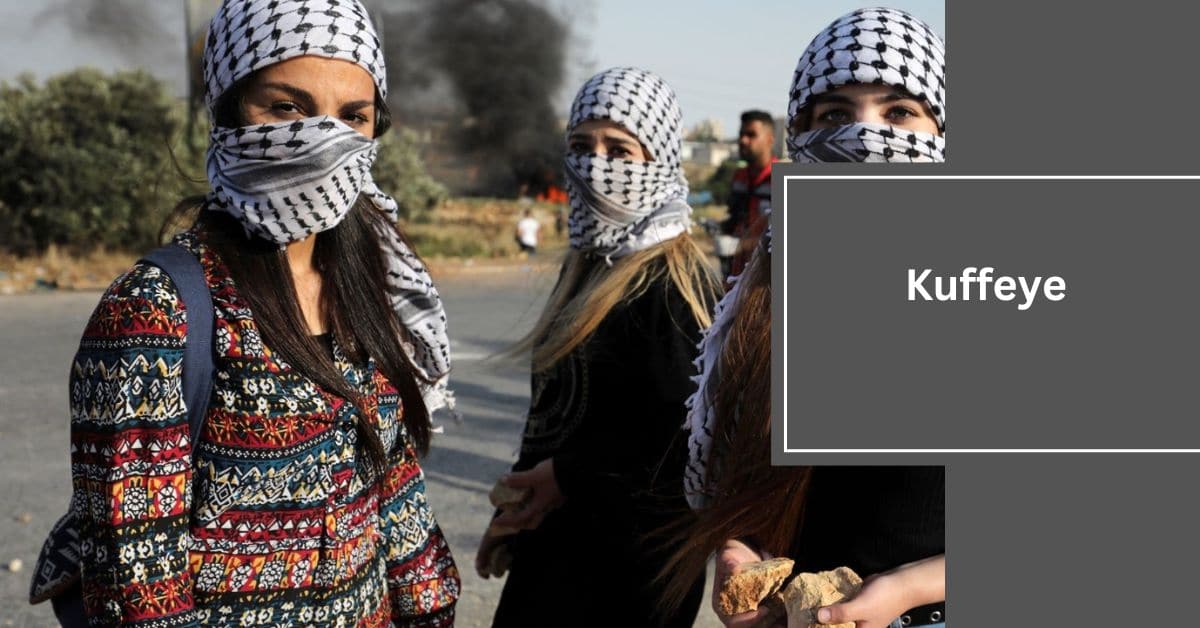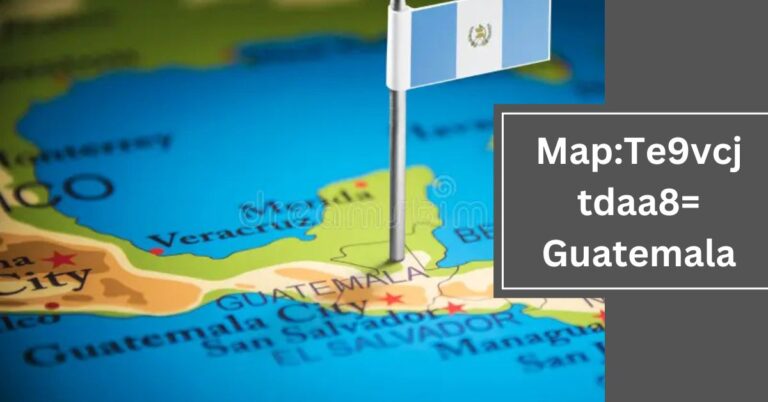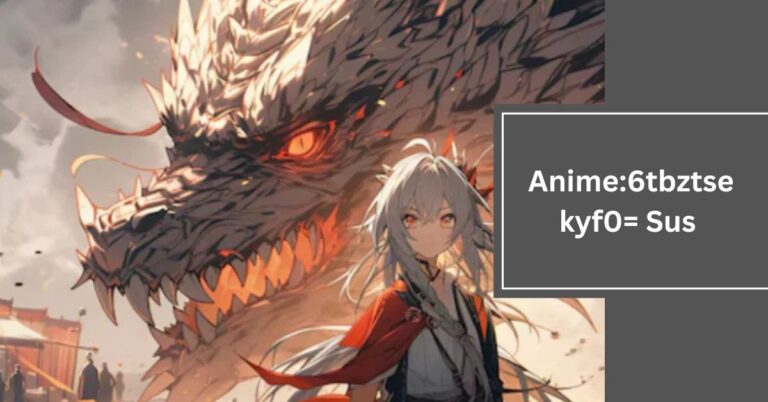Kuffeye – A Comprehensive Guide To Its Cultural Significance, History, And Modern Usage!
What is Kuffeye?
The Kuffeye refers to a traditional Middle Eastern headscarf, which holds deep cultural and political significance.
Similar in appearance to the keffiyeh, the kuffeye is traditionally worn by both men and women across various regions. Over time, it has evolved beyond a mere piece of cloth into a symbol of identity, resistance, and pride, especially among Palestinians.
The cultural essence of the kuffeye is rich, deeply intertwined with the history and heritage of the Middle East. In recent decades, its significance has spread beyond the region, making it a globally recognized symbol associated with solidarity movements and fashion trends.
The Historical Roots of the Kuffeye:

Origins of the Kuffeye in Middle Eastern Culture:
The origins of the kuffeye date back centuries, where it was primarily worn by Bedouins and peasants as protection against the harsh sun and wind. Its practical uses, however, only tell part of the story.
During the Ottoman era, the kuffeye became a common accessory among rural communities, particularly in Palestine. It was worn as a functional garment in everyday life but also carried with it elements of pride in one’s identity.
Kuffeye in Palestinian Nationalism:
The kuffeye became an emblem of Palestinian resistance during the 1936–1939 Arab Revolt. During this time, the kuffeye’s use spread among Palestinian fighters and civilians alike as a unifying symbol of defiance against British colonial rule and later, against Zionist forces.
The black-and-white patterned kuffeye, which has since become synonymous with the Palestinian cause, is a powerful visual representation of resistance, and it stands as an international symbol of solidarity with Palestine.
Modern-Day Significance of Kuffeye in Politics and Activism:
Today, the kuffeye is worn not only by Palestinians but also by individuals worldwide who wish to express support for the Palestinian struggle. Its use has been particularly prevalent during pro-Palestinian demonstrations, where it serves as a visual statement of solidarity with marginalized groups. In this sense, the kuffeye’s symbolic power extends beyond the Middle East, touching global movements focused on human rights, resistance to oppression, and calls for social justice.
Read More: 5 Signs Your Mattress Needs to Be Replaced
The Design and Meaning Behind the Kuffeye:
Patterns and Their Symbolism:
The design of the kuffeye is not just decorative; it carries deep meaning. The black and white pattern that is most widely recognized has specific symbolism. The net-like pattern is said to represent fishing nets, which point to a life of survival and the sustenance of local communities. Other interpretations suggest the crisscrossing pattern symbolizes the interconnectedness of struggle and solidarity.
Variations of the Kuffeye Design:
While the black-and-white version is the most well-known, the kuffeye comes in other variations. Red-and-white patterns are commonly associated with Jordanian and Iraqi culture, where it is worn to display tribal identity and pride.
Green and white versions also exist, often associated with pan-Arab colors and Islamic heritage. Each variation carries its own historical significance, representing a unique cultural or national identity.
The Material and Craftsmanship:
Traditional kuffeyes are made of cotton or wool, providing comfort and durability in the harsh desert environment. The craftsmanship that goes into producing a kuffeye is often seen as a form of cultural art.
In regions such as Hebron, Palestine, kuffeyes are still woven by hand, preserving this ancient craft. The process involves intricate attention to detail, with weavers ensuring that each piece reflects its cultural roots and symbolism.
The Kuffeye in Modern Fashion and Pop Culture:
Global Adoption of the Kuffeye:
Over the last few decades, the kuffeye has transcended its Middle Eastern roots to become a staple in global fashion. Celebrities, activists, and designers have incorporated the kuffeye into modern streetwear, bringing attention to its historical significance while adapting it into a contemporary style.
The Role of Kuffeye in Street Fashion:
Streetwear brands around the world have adopted the kuffeye as part of their collections, making it a fashion statement that combines traditional design with modern aesthetics. The kuffeye’s bold patterns and symbolic value have made it a versatile piece in the fashion world, representing cultural pride while staying true to the cause of resistance. High-end fashion houses, as well as independent designers, have used the kuffeye to make statements on political and social issues.
Cultural Appropriation and Ethical Considerations:
While the kuffeye’s global rise in fashion has been largely positive in terms of awareness, it has also sparked debates about cultural appropriation. Some argue that the kuffeye’s use as a mere fashion accessory strips it of its historical and political significance. As a result, wearing the kuffeye today requires an understanding of its deeper meaning and context, ensuring that it is worn in a way that respects its origins.
The Political Controversy Around Kuffeye:

Symbol of Resistance or Political Statement?
The kuffeye has always been more than just an accessory. For many, it represents defiance against occupation and imperialism. This powerful symbolism, however, has made the kuffeye a controversial item in certain political arenas.
For instance, some political factions in the West view the kuffeye as an extremist symbol due to its association with Palestinian resistance groups.This misconception overlooks the cultural and historical importance of the kuffeye for millions of people, reducing it to a symbol of political extremism rather than recognizing its broader message of resistance to oppression.
The Kuffeye as a Global Political Symbol:
As international attention on the Israeli-Palestinian conflict has increased, the kuffeye has become a recognizable political symbol worldwide.
Pro-Palestinian activists often don it during protests and solidarity campaigns. In this way, the kuffeye has become a global emblem not only of the Palestinian cause but of all struggles against colonialism, occupation, and injustice.
Read More: Borncyan.Us – Join Our Eco-Friendly Community Today!
The Future of Kuffeye:
As the world continues to evolve, so does the meaning and use of the kuffeye. While it remains a powerful cultural symbol, modern-day usage has expanded to include elements of fashion, activism, and political expression.
Moving forward, it is essential that those who adopt the kuffeye understand its rich history and significance, ensuring that it remains a symbol of pride and resistance for future generations.
Reclaiming the Kuffeye’s Authenticity:
As the kuffeye becomes more mainstream, efforts to reclaim its authenticity are growing. Palestinian communities, as well as designers and activists, continue to highlight the importance of wearing the kuffeye with respect to its origins.
Organizations are also working to ensure that kuffeyes sold around the world are ethically sourced, with proceeds benefiting the communities where these scarves originated.
FAQs:
1. What is the cultural significance of the kuffeye?
The kuffeye is a symbol of resistance, identity, and cultural pride, particularly in the Palestinian context, where it became associated with nationalism during the Arab Revolt of 1936–1939.
2. What are the common colors of the kuffeye, and what do they represent?
The most common colors are black-and-white, associated with Palestinian resistance, and red-and-white, often linked to Jordanian and Iraqi heritage. Each color variation carries different cultural significance.
3. How is the kuffeye traditionally worn?
The kuffeye is typically draped over the head and shoulders. In some cases, it is secured with an agal (headband) to keep it in place.
4. Is wearing a kuffeye considered cultural appropriation?
Wearing a kuffeye without understanding its significance can be considered cultural appropriation. It’s important to respect its historical and political symbolism.
5. How has the kuffeye become a global symbol?
The kuffeye gained global recognition through its association with pro-Palestinian activism and has been adopted in solidarity movements worldwide.
6. What materials are kuffeyes typically made from?
Traditional kuffeyes are made from cotton or wool, designed to be lightweight yet durable in desert climates.
7. Is the kuffeye worn by both men and women?
Yes, both men and women traditionally wear the kuffeye. It serves as a functional and symbolic garment for everyone.
8. What does the crisscross pattern on the kuffeye represent?
The crisscross pattern is often seen as representing interconnectedness or fishing nets, symbolizing survival and community.
9. Can the kuffeye be considered a fashion accessory?
While it has become a fashion trend, the kuffeye’s significance goes beyond fashion. It should be worn with respect to its historical and cultural meanings.
10. Where can I buy an authentic kuffeye?
Authentic kuffeyes can be purchased from Palestinian or Middle Eastern communities, and ethically sourced products are available online with proceeds going to support these
Conclusion:
The kuffeye is far more than a piece of cloth. It is a powerful symbol of cultural identity, resistance, and solidarity. As it continues to grow in global significance, it is important to remember the deep history behind it, particularly its ties to the Palestinian struggle. Whether worn as a sign of political support or integrated into modern fashion, the kuffeye’s legacy remains strong, reflecting the enduring spirit of those who resist oppression.
Read More:







